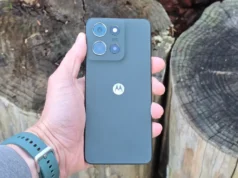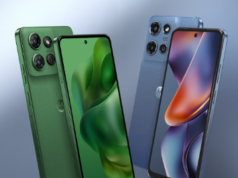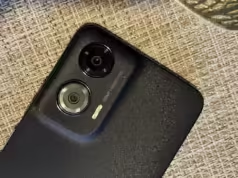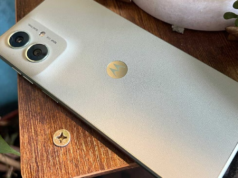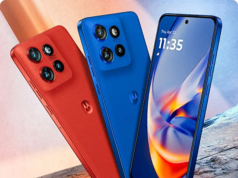In an era where mobile technology continues to evolve at an unprecedented pace, the Motorola Razr 50 Ultra stands as a testament to innovative design and engineering prowess, particularly in the foldable segment. This review embarks on a detailed exploration of a device that, while not a recent release in February 2025, continues to captivate enthusiasts with its distinctive blend of style, functionality, and robust performance. The Razr 50 Ultra is a product of Motorola’s long-established reputation in delivering competitively priced devices without compromising on quality or advanced features.
With a history of making a mark in the affordable market, Motorola has refined its approach to flip phones, and this model is no exception. Throughout this review, we will peel back every layer of the device, offering insights into its design philosophy, display characteristics, software nuances, and overall user experience. Readers will be introduced to an in-depth narrative that navigates through each aspect of the device—from its tactile build and innovative hinge mechanism to the refined camera setup and processing capabilities. The goal is to provide an honest evaluation, highlighting both strengths and limitations, so that potential buyers and tech aficionados can appreciate the thought process behind every design decision and engineering solution.

The Motorola Razr 50 Ultra is more than just another flip phone; it is a carefully crafted piece of technology that marries the charm of classic clamshell designs with modern-day innovations. This review is designed to serve as a comprehensive guide, ensuring that every facet of the device is examined with precision and clarity. In the following sections, we delve into the evolution of foldable smartphones, discussing how Motorola has leveraged its experience to overcome past challenges such as screen crease visibility, thermal management, and limited connectivity options.
As we navigate through the intricate details of the Razr 50 Ultra, we explore its upgraded cover screen, enhanced water resistance, and faster charging capabilities—all improvements that set it apart from its predecessor, the Razr 40 Ultra. Each paragraph in this narrative aims to illuminate how these incremental enhancements collectively contribute to a more polished user experience. Whether you are a seasoned fan of foldable technology or a newcomer seeking an affordable yet innovative smartphone, this article promises to deliver a balanced, in-depth analysis that covers every relevant detail, ensuring you are well-informed about what this device has to offer.
Motorola’s commitment to redefining what a flip phone can be is evident in the careful engineering behind the Razr 50 Ultra. By integrating premium materials with advanced technology, Motorola has created a device that not only performs well but also feels exceptional in the hand. This review will guide you through the various design choices that make the Razr 50 Ultra stand out, from its textured vegan leather finish and robust aluminum frame to the precisely engineered stainless steel hinge cover.
The experience of using the device is further enriched by its compact form factor when folded and the generous display area that unfolds into a full-sized smartphone, a dual personality that caters to both convenience and functionality. With its evolved design cues and practical enhancements, the Razr 50 Ultra offers a unique proposition in a market saturated with conventional smartphone designs. As we progress through this review, you will gain a clear understanding of how each design element contributes to the overall user experience and why the device continues to hold relevance even a year after its initial launch.

The purpose of this hands-on review is to offer an exhaustive examination of the Motorola Razr 50 Ultra from every conceivable angle, ensuring that readers come away with a complete picture of its capabilities and shortcomings. We will discuss the evolution of its hardware design, analyze its display technology, and assess the software enhancements that add a layer of convenience and personalization to everyday usage. Special attention is given to aspects such as the foldable mechanism’s reliability, the intuitive user interface that comes with Motorola’s hello UI on top of Android 14, and the overall durability of the device in various conditions.
Throughout this review, the narrative remains committed to providing nuanced insights that reflect the genuine user experience, ensuring that each detail is articulated in a manner that is both engaging and informative. The analysis is rooted in practical observations and real-world usage, capturing the spirit of a seasoned reviewer who values depth, clarity, and honesty. By the end of this comprehensive exploration, you will be equipped with all the knowledge needed to determine if the Motorola Razr 50 Ultra aligns with your needs and expectations in the competitive landscape of foldable smartphones.
Design and Build Quality
The first aspect to catch the eye with the Motorola Razr 50 Ultra is its striking design, which melds contemporary aesthetics with a nostalgic flip phone charm. The device, when folded, presents a compact clamshell form factor that exudes both elegance and practicality, making it exceptionally pocket-friendly without sacrificing performance. The rear of the phone is largely occupied by an expansive cover screen that not only serves as an informational hub but also accentuates the sleek, modern silhouette of the device. Surrounding this prominent display is a carefully curated finish that combines textured vegan leather with robust yet lightweight materials.
The use of high-grade 7,000 series aluminum for the frame instills a sense of durability, while the stainless steel employed for the hinge cover lends an additional air of sophistication. This meticulous attention to detail in the choice of materials reflects Motorola’s commitment to delivering a device that is both visually appealing and tactilely satisfying, offering a premium feel without an exorbitant price tag.
Beyond aesthetics, the build quality of the Razr 50 Ultra underscores its resilience and practicality. The design integrates an improved hinge mechanism that has been refined to be both smaller and more compact than its predecessors. This innovation not only minimizes the visible crease when the phone is open but also ensures a smoother transition between folded and unfolded states. Users will appreciate that the crease is barely noticeable unless illuminated by direct light or actively probed by touch, a significant improvement for those who have long criticized earlier foldable models for their distracting screen creases.
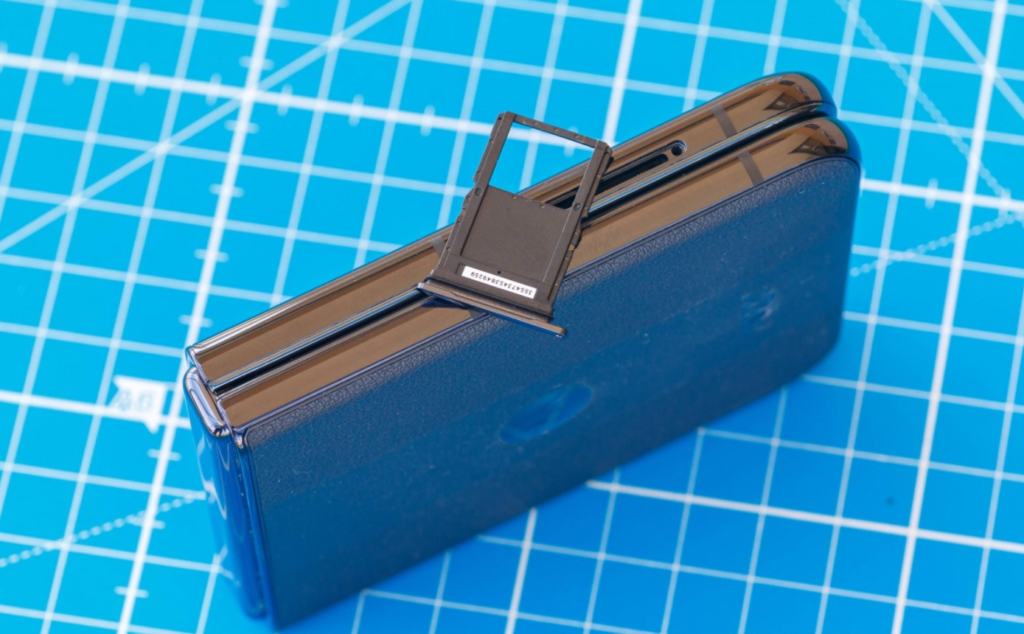
Additionally, the device boasts an impressive water protection rating of IPX8, providing reliable defense against accidental splashes and exposure to moisture. Such robust protection, combined with the thoughtful integration of high-quality materials, results in a flip phone that is as durable as it is stylish, perfectly balancing form and function.
Handling the Razr 50 Ultra in hand further reinforces its high-quality construction and user-centric design. The textured back not only contributes to a refined aesthetic but also enhances grip, reducing the likelihood of accidental slips during daily use. The interplay of premium finishes—ranging from the soft, supple feel of the vegan leather to the cool, sturdy touch of the aluminum frame—creates a harmonious tactile experience that speaks to the device’s attention to ergonomic detail.

Every curve and edge appears meticulously sculpted to provide both comfort and style, ensuring that the device feels as good to hold as it is to behold. This combination of refined aesthetics, robust build quality, and practical durability makes the Motorola Razr 50 Ultra a standout option for those seeking a flip phone that does not compromise on either appearance or resilience.
Display and User Interface
Unfolding the Razr 50 Ultra reveals a display that is as expansive as it is technically impressive, underscoring Motorola’s commitment to merging innovation with user-friendly design. The main screen, a 6.9-inch foldable LTPO OLED panel, delivers vibrant visuals with a full 1080p resolution and a refresh rate that peaks at 165 Hz. This high refresh rate ensures that scrolling, gaming, and general navigation are exceptionally smooth, contributing to a fluid user experience that belies the device’s compact form factor.
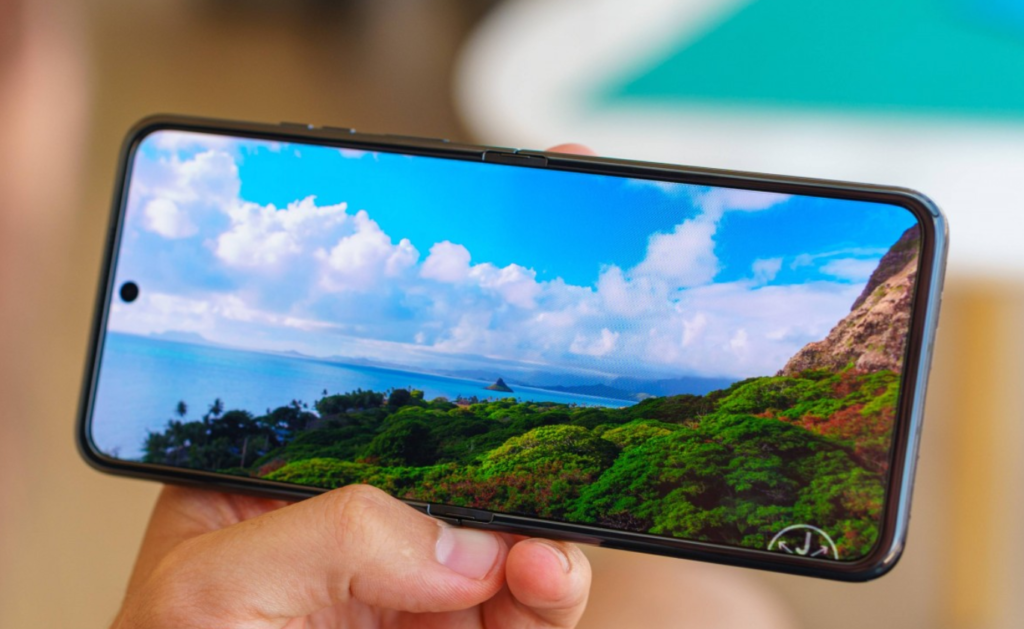
Meanwhile, the cover display has seen a significant upgrade, now measuring a generous 4 inches and boasting similar LTPO OLED technology with 1080p clarity and robust Gorilla Glass Victus 2 protection. Both screens are engineered to offer impressive brightness levels; manual adjustments can push the brightness to around 540 nits, while an intelligent auto mode can boost it significantly above 1,250 nits in harsh lighting conditions. This dynamic brightness control is particularly useful when transitioning between indoor and outdoor environments, ensuring that content remains visible and vibrant regardless of ambient light.
The design of the display system is further enhanced by its adaptability and power-saving features. Thanks to LTPO technology, both the inner and cover displays can dynamically adjust their refresh rates, dropping as low as 1 Hz when the phone is idle to conserve energy. This intelligent modulation not only extends battery life but also enhances the overall efficiency of the device. Despite the possibility of reaching a 165 Hz refresh rate during specific benchmarks or when settings are forced via gaming modes, the screens typically operate at 120 Hz during everyday use, striking an ideal balance between performance and energy consumption.
Additionally, both displays support 10-bit color depth and are compatible with HDR 10+ video and Dolby Vision standards, ensuring that multimedia content is rendered with exceptional clarity, depth, and color accuracy. The user interface is designed to be as intuitive as the hardware is impressive, with a seamless transition between the cover screen and the main display that allows for fluid interactions and a cohesive user experience.
From a user interaction standpoint, the cover screen of the Razr 50 Ultra offers much more than just a preview of notifications or basic information. It hosts a variety of functionalities typically reserved for the main display, including access to supported applications, calendar events, weather updates, and interactive widgets. A simple swipe gesture reveals quick toggles and an efficient task switcher, enabling users to manage multiple functions without the need to fully unfold the device.
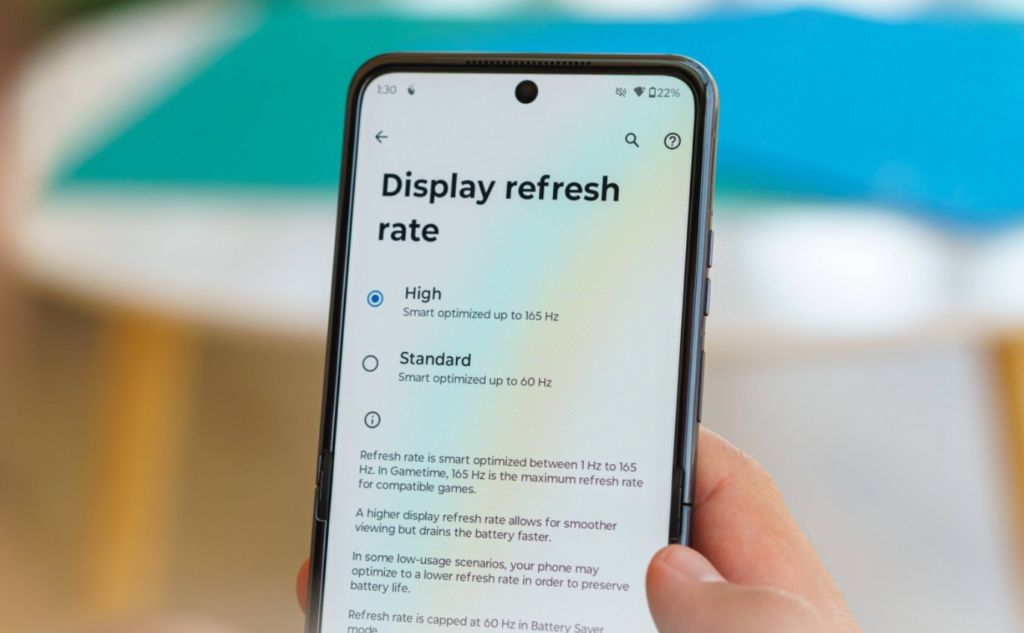
Although not all applications are natively supported on this secondary screen, many essential services—such as Google Photos, Gmail, and Google Maps—are accessible either directly or in widget form, allowing for a versatile, on-the-go experience. This integration of advanced features into the cover display not only reinforces the device’s role as a modern flip phone but also highlights Motorola’s innovative approach to maximizing screen real estate in a compact format.
Software and Connectivity
Running on Motorola’s refreshed hello UI layered on top of Android 14, the Razr 50 Ultra offers a user interface that is both minimalist and functional. The software experience closely mirrors the simplicity of stock Android, yet it incorporates subtle customizations that enhance usability without overwhelming the user. The interface is designed to be clean, intuitive, and highly responsive, ensuring that every interaction feels natural and deliberate. One of the standout aspects of this software is its integration with the reimagined Moto app, which serves as a central hub for customization and device management.

Here, users can access an array of dynamic wallpapers that animate in response to the phone’s flex, as well as generate AI-powered backgrounds tailored to their personal aesthetic. These small touches contribute to a cohesive ecosystem where hardware and software work in tandem to provide a delightful user experience.
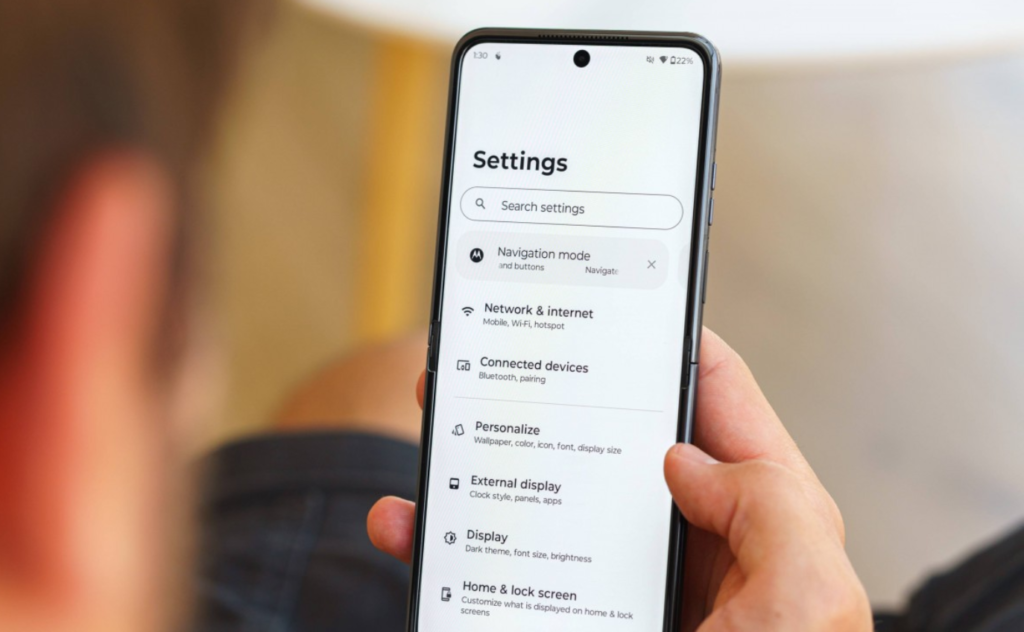
Connectivity on the Razr 50 Ultra is equally forward-thinking, with Motorola branding its advanced connection system as Smart Connect. This feature is designed to streamline the process of linking the phone to external devices such as PCs or larger monitors, thereby expanding its usability beyond traditional smartphone functions. The Smart Connect functionality aims to create a seamless experience whether the device is being used for productivity tasks or multimedia consumption.



Although the precise details of its performance in varied real-world scenarios may still be emerging, early impressions suggest that the feature adds significant value by enhancing multitasking capabilities and bridging the gap between mobile and desktop environments. Such innovations in connectivity reflect Motorola’s broader vision of transforming the flip phone from a niche gadget into a versatile, all-in-one solution for modern communication and entertainment needs.
The software support promises further add to the appeal of the Razr 50 Ultra, with Motorola committing to three years of operating system updates and four years of security patches. This long-term support is particularly reassuring for users who are keen on investing in a device that remains secure and current over an extended period. The approach ensures that, despite the device’s initial release in 2024, it continues to benefit from ongoing enhancements and security improvements well into 2025 and beyond.
Such dedication to software longevity not only boosts the device’s resale value but also demonstrates Motorola’s confidence in the durability and future-proofing of its design. Overall, the combination of a streamlined, customizable user interface and robust connectivity features makes the Razr 50 Ultra a compelling option for those seeking a flip phone that delivers both cutting-edge technology and long-term reliability.
Performance and Battery Life
At the heart of the Razr 50 Ultra lies a Snapdragon 8s Gen 3 chipset, a component that provides more than ample processing power for everyday tasks and intensive applications alike. Although this chipset is not positioned as Qualcomm’s top-tier offering, it still delivers flagship-grade performance that caters to multitasking, gaming, and other resource-intensive operations. In direct comparisons, the Razr 50 Ultra shows a modest improvement over its predecessor, the Razr 40 Ultra, which was powered by a slightly older generation chipset.
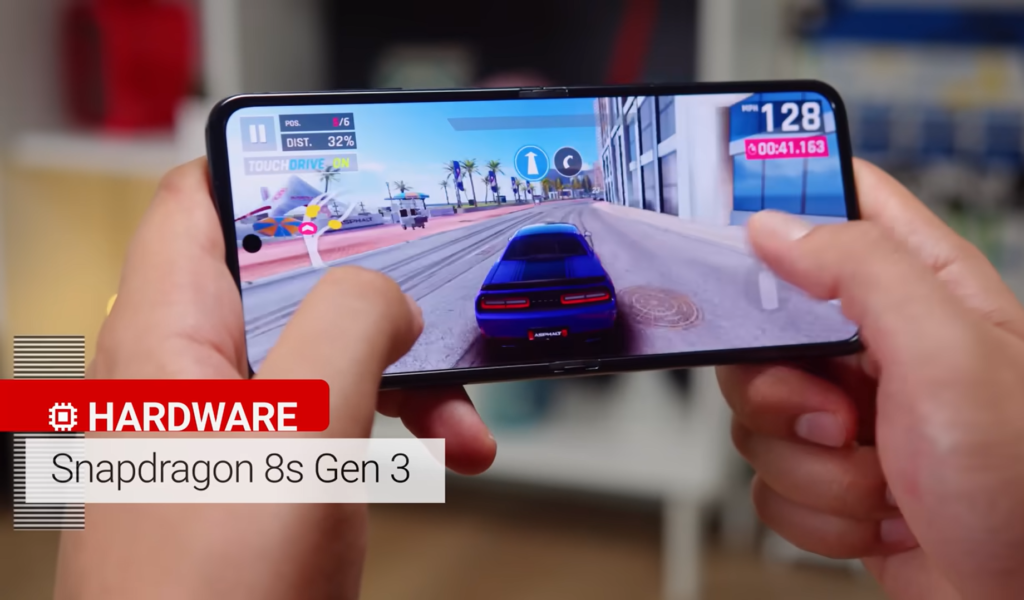
However, it is worth noting that in certain benchmark scenarios, especially when compared to competing foldable models equipped with Snapdragon HN2 processors, the performance metrics may reveal some areas where the Razr 50 Ultra lags behind. Nevertheless, real-world usage confirms that the device is more than capable of handling demanding applications without noticeable lag or stutter, ensuring a smooth and responsive user experience across various scenarios.
Thermal management is a critical aspect for any foldable device due to the inherent challenges posed by a compact form factor, and the Razr 50 Ultra is no exception. During extended sessions of heavy processing, such as prolonged gaming or intensive multitasking, the device experiences a significant degree of thermal throttling—sometimes reaching reductions of up to 50% in performance.

While this throttling may be noticeable to power users pushing the device to its limits, the overall performance remains robust enough for everyday activities and most high-performance tasks. Motorola has strived to balance performance with thermal efficiency, yet the challenges inherent in foldable designs mean that some compromises in heat dissipation are inevitable. Despite these thermal limitations, the device continues to deliver a consistently high level of performance for the majority of users, ensuring that its processing capabilities are not unduly hampered in typical usage scenarios.

Complementing the performance aspect is the device’s battery life, which has seen a welcome increase in capacity from previous iterations. The Razr 50 Ultra is equipped with a 4,000 mAh battery—up from 3,800 mAh in the earlier model—allowing it to achieve an active use score of approximately 12 hours and 5 minutes. This performance translates into roughly 22 hours of talk time, over 10 hours of web browsing, more than 15 hours of video streaming, and around 8 hours of gaming under standard conditions. The device is shipped with a 68W charger; however, it currently supports wired charging up to 45W, an improvement from the 30W support seen in the prior model.
In practical terms, users can expect the phone to reach a substantial charge—up to 78%—in just 30 minutes, with a complete recharge taking under 50 minutes. Additionally, the support for 15W wireless charging further enhances the overall convenience, ensuring that the device can be powered up efficiently in a variety of settings. While thermal throttling remains a point of concern during extended heavy usage, the balance of processing power and improved battery management ultimately provides a satisfactory performance for most users, making the Razr 50 Ultra a reliable companion for both work and play.
Camera Performance and Imaging
Photography enthusiasts will find that the Razr 50 Ultra offers a versatile dual-camera system that caters to a range of shooting scenarios. On the rear of the device, a 50-megapixel primary camera is paired with an equally impressive 50-megapixel telephoto lens, designed to provide a dedicated zoom experience without the need for an additional ultra-wide perspective. The primary sensor is calibrated to deliver accurate exposures, a wide dynamic range, and excellent contrast, producing images that are both vibrant and true to life.
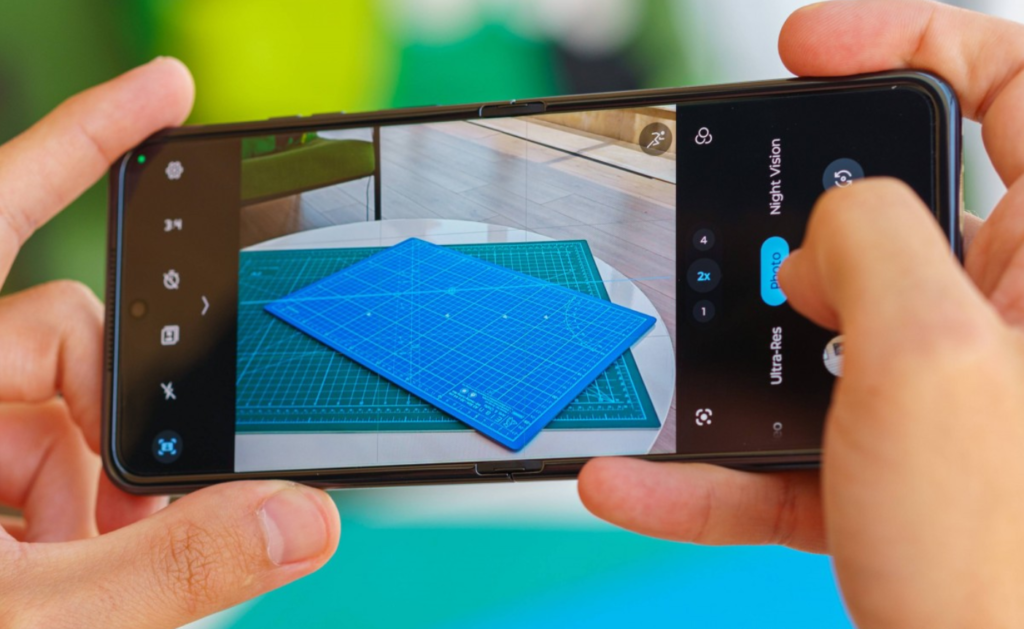
While some images may occasionally exhibit a slight over-sharpened effect in terms of detail, the overall output remains commendable, with well-balanced color saturation that faithfully reproduces natural hues. In daylight scenarios, the camera performs reliably, capturing scenes with a harmonious blend of brightness and shadow detail that renders each photograph with clarity and depth. In low-light conditions, the system still manages to hold its own, although there may be occasional instances where white balance appears slightly off, particularly in outdoor scenes with challenging lighting.

The telephoto component of the camera system is designed to offer more than just a basic zoom functionality—it provides a dedicated optical zoom experience that excels at capturing subjects from a distance while preserving image detail.

With a 2x zoom capability, users can achieve close-up shots that maintain excellent clarity and color vibrancy, even when compared to images taken with the primary sensor. Additionally, there is an option for a 4x zoom, although the resulting detail may not be as sharp as that produced by the 2x mode, especially in lower light conditions.

Nonetheless, the telephoto lens is a valuable asset for those who prioritize portrait photography or require a dedicated zoom lens for capturing distant subjects. When it comes to video, both the primary and telephoto cameras are capable of recording in 4K resolution, with the primary camera delivering footage that is rich in detail and exhibits a warm, natural color balance. Electronic stabilization is applied to mitigate minor shakes during recording, though some residual motion can sometimes be detected, particularly in dynamic, hand-held scenarios.




An innovative aspect of the Razr 50 Ultra’s camera system is its ability to utilize the secondary cover screen as a viewfinder for taking selfies with the rear cameras. This unique feature allows users to capture self-portraits with the high-quality imaging capabilities of the main camera, resulting in photos that benefit from the same depth and clarity as standard rear-camera shots. The selfies captured in this manner are characterized by a close, well-framed composition that accentuates a pleasing shallow depth of field, providing natural separation between the subject and the background. In addition to this rear-view selfie functionality, the device also houses a dedicated 32-megapixel front-facing camera embedded within the inner display.




Although the quality of selfies taken with this sensor may not match that of the primary cameras, and the absence of autofocus may lead to slightly slower performance, the results are still more than adequate for everyday use. Together, these imaging solutions offer a comprehensive photographic toolkit that caters to a wide range of creative needs, ensuring that whether you are capturing sweeping landscapes, intimate portraits, or candid self-portraits, the Razr 50 Ultra is well-equipped to handle the task with finesse and precision.
Overall Experience and Final Thoughts
In summary, the Motorola Razr 50 Ultra emerges as a well-rounded foldable smartphone that successfully blends classic flip phone design with modern technological advancements. Its compact clamshell form factor, combined with a sophisticated build quality that incorporates premium materials and an improved hinge mechanism, delivers a user experience that is both nostalgic and refreshingly contemporary.
The device’s display system, featuring both a large, vibrant main panel and an equally capable cover screen, ensures that users can enjoy a rich visual experience in a variety of settings—from immersive multimedia consumption to quick glances at notifications. Furthermore, the integration of advanced software features, including the refined hello UI and Smart Connect technology, enhances the overall versatility of the device, making it a compelling choice for those who value both innovation and practicality.

While the Razr 50 Ultra excels in many areas, there are aspects that merit further consideration. The performance, driven by a Snapdragon 8s Gen 3 chipset, is robust enough for daily tasks and gaming; however, the device’s thermal management remains an area where improvements could be made, as evidenced by noticeable throttling during prolonged high-intensity use. Similarly, while the enhanced battery capacity and faster charging capabilities offer convenience, users who demand sustained performance during extended heavy use may find the thermal constraints somewhat limiting.
Despite these minor drawbacks, the overall user experience remains highly satisfying, particularly given the thoughtful integration of features that cater to modern connectivity, multimedia, and creative expression. The camera system, while not revolutionary, offers a versatile dual-sensor configuration that captures detailed images across various lighting conditions and zoom ranges, making it a reliable companion for photography enthusiasts.
Ultimately, the Motorola Razr 50 Ultra is a testament to the ongoing evolution of foldable smartphones—a device that balances form, function, and innovative technology in a compelling package. It is a flip phone that does not merely rely on nostalgia but instead pushes the boundaries of what can be achieved in a compact, portable format. For users seeking a device that provides a blend of nostalgic charm with cutting-edge functionality, the Razr 50 Ultra stands as a strong contender.

With its refined design, comprehensive feature set, and impressive display and camera performance, it offers a holistic user experience that is both engaging and practical. While there remain areas for improvement, particularly in thermal management during extreme usage, the overall package is robust, versatile, and forward-thinking—a device that continues to hold its own in a competitive market even as it matures beyond its initial release year.
In conclusion, the Motorola Razr 50 Ultra represents a significant milestone in the evolution of foldable smartphones, marrying innovative design with a suite of practical features that cater to a diverse range of user needs. Its blend of premium build quality, advanced display technology, and robust performance makes it a standout option for those who appreciate both form and functionality. Despite some thermal challenges and minor limitations in the camera system, the device delivers a well-rounded experience that is perfectly suited for everyday use, multimedia consumption, and creative photography.
For anyone in search of a modern flip phone that offers both a nostalgic appeal and a forward-looking technological edge, the Razr 50 Ultra is a recommendation that comes with strong credentials. Its seamless integration of hardware and software, combined with thoughtful enhancements over previous models, ensures that it remains a compelling choice in the rapidly evolving landscape of foldable devices. As we reflect on the overall experience provided by the Razr 50 Ultra, it is clear that Motorola has succeeded in creating a device that is both a nod to the past and a vision for the future—a flip phone that continues to impress well into its lifecycle.


